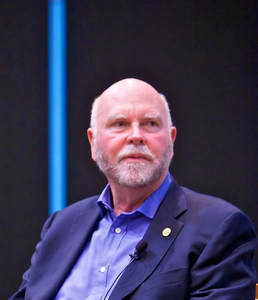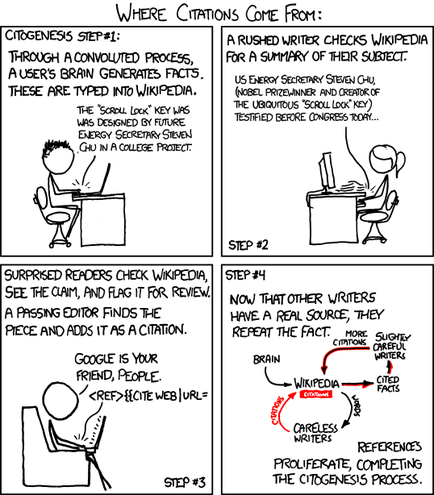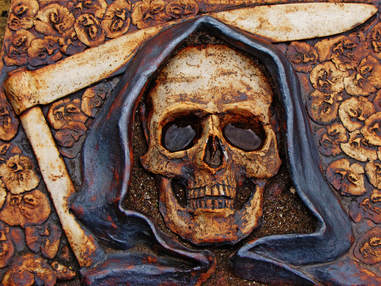|
The trope of the mad scientist has been around for a while, and many people, including scientists, indulge in it as a joke, although some claim it has a grain of truth to it. The classical image of the mad scientist was cemented by the 1931 film Frankenstein, directed by the legendary James Whale. In this movie, the scientist Henry Frankenstein, played by actor Colin Clive, assembles a body from parts stolen from graveyards and proceeds to jolt it with electricity, infusing it with life. Frankenstein’s manic scream “It’s alive!” has become a cultural icon that has been both referenced in academic literature and parodied in popular culture. What is less quoted in the popular realm is what he says afterwards: “Now I know what it feels like to be God!” This seems to be at the heart of the concept of the mad scientist: the original sin, eating the fruit from the tree of knowledge, being like God. And what better way to be like God than to create life? Of course, Frankenstein was barking mad, but don’t sane scientists have a little bit of Frankenstein in them when they seek the knowledge of the inner working of nature and the universe? Doesn’t scientific discovery make scientists feel a little bit like Gods? My response to this question is that it is irrelevant. Scientists are humans, and their behavior during the process of discovery or creation is as complex as that of any other human. In my opinion the important thing is that regardless of what scientists “feel”, they are expected to follow the scientific method. The truth is that Frankenstein’s research, even by the standards of his time, was not very scientific. What was his question? What was his hypothesis? What was the rationale for the whole enterprise? Why try to create life? Why work in isolation without seeking advice from other scientists? Frankenstein was no more a scientist than an astrologer is a scientist. He was not following the scientific method. However, as it turns out, back in 2010 a group of real scientists led by Craig Venter of the Human Genome fame succeeded in creating life. It is instructive to compare what they did with the modus operandi of their fictional counterpart.  In an effort that took more than a decade of solving seemingly unsurmountable technical problems, Venter and his group synthetized a modified chemical copy of the genome of a microorganism called Mycoplasma mycoides and inserted it into a cell of a different species called Mycoplasma capricolum. They engineered the M. mycoides genome in such a way that it would get rid of the endogenous M. capricolum genome. So they ended up with an M. capricolum cell which contained a synthetic M. mycoides genome. The synthetic genome took over the host cells which began multiplying. Unlike most living things which are made by strands of DNA that come from other living things, here, for the first time in history, a life form had been created using a strand of DNA made in a lab and designed by a computer! No one in Venter’s group broke out into maniacal laughter and screamed “It’s alive!”, or claimed to have experienced “what it feels like to be God” (at least publicly). They were all, of course, aware of the philosophical issues revolving around what they were attempting to do, but the point of the project was to answer some very specific scientific questions such as whether the information present in the genome was enough to reproduce a living organism, or whether something else was required. During the whole research process Venter’s group shared information about what they were doing and requested input from other scientists. Additionally, even before performing the first experiments, they asked a team of independent scientists to evaluate the risks, challenges, and ethics involved in creating a new species in the laboratory. The ethics team spent 2 years carrying out this evaluation and then openly shared their conclusions. Venter’s work was not merely an academic exercise, as it led to many practical applications. For example, thanks to the technology developed we have the capacity to quickly sequence the genome of a virus and send the information about the sequence over the internet to centers where the viral genome will be synthesized and used to drive the creation of modified viruses to make vaccines. This sober approach to the scientific enterprise may be more boring than the deranged approach of the quintessential mad scientist, but in real science this is the way things work. Photograph of Craigh Ventor is from the Chemical Heritage Foundation reproduced here under a Attribution-Share Alike 3.0 Unported license
0 Comments
A while ago I was surprised to read in Wikipedia that the decarboxylation step of the reactions of the pyruvate dehydrogenase complex, which connects glycolysis to the Krebs Cycle, was referred to as the “Swanson Conversion”. Even though I had been trained as a biochemist, I had never heard about this before. So I did some research, and I was not able to find any references regarding a doctor Swanson who was involved in the study of this chemical reaction. I did, however, find a claim that stated that a high school teacher named Swanson, who wanted something named after him, instructed his students to insert this claim in Wikipedia. I published a post in my blog that was critical of this hoax, and as a result of this the term “Swanson Conversion” was dropped from the Wikipedia page where I found it, although it can be still found in several sites that mirror or quote Wikipedia. But I was still curious if the story about the high school professor was true. Well, thanks to some sleuthing by Andreas Kolbe, who posts on Twitter under the handle “Wikiland” the mystery has been solved. The edit was made in 2010, and he traced the IP address involved in the edit of the Wikipedia Pyruvate Dehydrogenase page to a school and found that in that school there was a teacher named Swanson. Kolbe proceeded to contact the teacher (I will not be revealing the name, location of the school, or the first name of the teacher). According to the teacher, he was following a textbook that mentioned the different steps of energy metabolism; glycolysis, Krebs Cycle, and electron transport chain, but then the book went on to state that four steps were involved without specifically naming the fourth step. He then decided to christen this fourth step (the chemical reaction linking glycolysis to the Krebs cycle) after himself to help his students learn its importance in the process. Later he found that one of his students had, without his consent, introduced the term into Wikipedia. The teacher then decided that he would let the term linger there as a social experiment and point it out to each of his new classes of students as an example of the perils of using Wikipedia as a reference source.  As it turns out the Swanson Conversion hoax has been one among many hoaxes to plague Wikipedia. Several of these hoaxes eventually get referenced by non-Wikipedia sources leading to a process humorously called “citogenesis” (or more formally “circular reporting”) where the non-Wikipedia sources that originally copied the information from Wikipedia get referenced by Wikipedia itself as proof of the validity of the information! There are several well-documented instances of citogenesis in Wikipedia. In the case of the Swanson Conversion, although the hoax lingered for about 7 years, only recently did I find an example of the term making it to a mainstream scientific publication indexed in the NCBI (National Center for Biotechnology Information) PubMed database. Thankfully, I was able to detect this hoax before the circle was closed and a new “citogenesis” event took place. As to Mr. Swanson, I am told that he is a very good and fun teacher who inspires his students, has won a prestigious teaching award, and has used this example of a bogus Wikipedia entry to instruct his students on the perils of using this database. I do hope, however, that in the future he is more proactive about calling out these hoaxes. Update 2-26-2019: The Wikipedia Swanson Conversion Hoax Spreads Into Mainstream Science! Image reproduced here under a Creative Commons Attribution-NonCommercial 2.5 License. When asked about what science has done for humanity many people would probably mention medical advances. Indeed science has allowed us to create vaccines, antibiotics, drugs, surgical methods, and many other things to treat human disease and improve human health. There are millions of people today upon the face of the earth (including yours truly) who would not be here if it weren’t for these medical advances. But this is not the most important thing that science has done for us. Other people would allude to the technological advances that science has made possible that have improved our lives. Inventions like refrigerators, air conditioners, cars, planes, phones, computers, and many other things have greatly improved our lives and increased our freedom and abilities. But this is not the most important thing science has done for us. Even others will mention the way science has opened our eyes to the mystery and beauty of realms previously unseen by us such as when we contemplate images of faraway worlds relayed to us by the probes we have sent into space, or the images of the life of cells and other organisms in the microscopic world. But this is not the most important thing science has done for us. So what is it?  Let me give you a hint. Recently millions of Americans watched an eclipse of the sun. By all accounts it was a festive event where people expressed amazement at the natural phenomenon. But here is the key thing. No one ran to hide in their basement during the eclipse. No one felt that the eclipse was a “bad omen”. No people were sacrificed to “prevent the moon from swallowing the sun”. The eclipse did not influence domestic or foreign policy. It was just a celestial body (the moon) transiting in front of another (the sun) and casting its shadow on the earth. Amazing? Fantastic? Incredible? Yes. Scary? Foreboding? No. Figured it out? This is the gift of science. It has given us information about what things are and what they aren’t; about what can happen and what can’t, and about how things work, and why. This allows us to live better lives free of the shackles of superstition. It allows us to act rationally in response to the changing world about us and optimize our lives. And why is this? Because ignorance in the face of occurrences that may have an impact on our lives generates fear and fear is the begetter of some of the most barbaric behaviors that humanity has ever witnessed.  Ever read about when the black plague decimated most of medieval Europe? The best minds of the period could not get beyond explanations such as an “unfavorable conjunction of planets” or an “infected air”. Among other explanations was a divine punishment for sinfulness. The sheer panic and terror led family members to abandon each other, doctors and priests to desert their posts, and mobs of people to target those who were different such as gypsies or Jews, who were exterminated in many places. After hundreds of years and many outbreaks, it was finally worked out that the plague was caused by a bacterium (Yersinia pestis) which is transmitted by fleas, which in turn are carried by animals like rats. Scary? Yes, but just merely a natural occurrence that is well within our power to control. Today there are still cases of plague, but they can be kept to a minimum through sanitation and easily treated with antibiotics. When human beings are concerned (or made to be concerned) about threats real or imaginary, they will believe anything and do anything, and this weakness is often successfully exploited by those among the “powers that be” who want to implement their social or corporate agendas, further their standing or careers, or simply profit. Furthermore, because science is so successful at finding the truth, these “powers that be” have understood that a very important part of their plan has to be the delegitimization of science.
Thus the anti-vaccination movement claims that pro-vaccination scientists are controlled by the vaccine industry. The anti-climate change movement claims that climate change scientists are controlled by the liberal science funding agencies. The creationist movement claims that evolution science is part of the war on Christianity. The alternative therapies lobby claims that the medical establishment is preventing citizens from using inexpensive and equally effective treatments. The gun lobby has successfully prevented government funds from being used to study gun violence claiming that it would be part of a slippery slope towards the erosion of key constitutional rights. The above highlights a sad truth about a gift. A gift is a two part process. The first part occurs when it is given, but the second part involves receiving it. In our complex world where fantasy and folly can de facto become a reality if enough people believe them, science can be successful in transmitting us its gift only to the extent that its discoveries are accepted by individuals and societies. Eclipse: CCO Creative commons license “Free for commercial use. No attribution required”. The black death by Leo Reynolds, Attribution: NonCommercial-ShareAlike 2.0 Generic (CC BY-NC-SA 2.0) license. The popular view of scientists is that of methodical and logical individuals. The scientist evaluates the available data regarding some problem or question of importance, comes up with hypotheses, designs and carries out experiments or observations, processes the results, and comes up with answers. Indeed the scientific pursuit is often comprised of systematic, coherent, and incremental approaches to uncovering the ways of nature, but the view that this is the only way scientists operate is a simplification of the complexity of scientific thinking. Science is replete with stories of madness and passion, stubbornness and irrationality, perilous quests and hopeless struggles, and ego trips and selfless deeds. And this should not surprise anyone. Scientists are, after all, human, and as humans they are affected by the same emotions and contradictions that afflict all human beings, and they often get their ideas by the same means that most non-scientists do. One of these methods of obtaining ideas is no other than dreams. Many scientists of renown have gained inspiration for their work from dreams. The German chemist August Kekule had been trying to figure out the structure of an organic compound called benzene. One day when he dozed off, he dreamt of carbon atoms that joined each other forming a chain. Then the chain of atoms turned into a snake, and the snake bit its tail and started spinning. Kekule woke up and realized that the structure of benzene must be cyclical as opposed to linear. This insight turned out to be true and paved the way for the creation of a new branch of chemistry (aromatic chemistry) and a better understanding of the nature of chemical bonds. The German pharmacologist Otto Loewi had been trying to figure out how nerve signals are transmitted. One night he had a dream of how he could figure this out, and he promptly went to the lab to perform the experiment. He dissected a frog’s beating heart with the vagus nerve still attached and placed the heart in a saline solution. Loewi then proceeded to stimulate the nerve by electrical means, and this had the effect of slowing down the beating heart. He took the solution that bathed the first heart and added it to another’s frog beating heart that he had dissected with no vagus nerve attached to it, and the second heart slowed down too! Loewi had discovered a nerve signal that was released from the stimulated nerve in the first heart and which leaked out to the bathing solution. This chemical signal was still strong enough to be able to act on the second heart when the bathing solution was placed in contact with it. The chemical he discovered that day was eventually shown to be what we today call acetylcholine. Loewi received the Nobel Prize for his discovery in 1936. The Russian Chemist Dmitri Mendeleev was trying to come up with a way to classify all the known elements according to their chemical properties. He had a dream of a table where the elements were arranged in a certain order. When he woke up he quickly wrote it down. Not only was he able to organize all the known elements, but he was able to predict that new elements would be discovered, and he listed their properties. He was eventually proven right and his discovery, the periodic table, is the pillar of modern chemistry. The brilliant Indian mathematician Srinivasa Ramanujan made important contribution to several fields in his discipline. He was a very religious person and claimed that many of his mathematical discoveries were presented to him in dreams by the Hindu god Narasimha. Another mathematician, the American Donald Newman, who made important advances in mathematical areas such as approximation theory, had some approaches for solving problems revealed to him in dreams where he interacted with both known and unknown people. The British naturalist Alfred Russel Wallace dreamt about the theory of evolution by natural selection while hallucinating in the middle of a bout of malaria. He is considered a codiscoverer of the theory along with Charles Darwin. The above, of course, are just some of the big names. Many average scientists have also benefited from their treks to the land of dreams. So how does this square with the idea that science is methodical, logical, and rigorous? The answer is that the scientific method provides a framework for testing ideas. This is the methodical, logical, and rigorous part of science. However, there is nothing in the scientific method regarding what the source of these ideas should be. Dreams, intuition, messages from God or from “beyond”, you name it. When it comes to ideas, anything is fair game for scientists. However, it is what comes after the conception of an idea that makes science what it is. Every idea, no matter its origin, must be put to test. And the horrible little secret of science is that most ideas crash and burn when measured up to the evidence. It is great to read about a scientist like Loewi coming up with a Nobel Prize winning idea in a dream, but the truth is that stories like those of Loewi, Kekule, Mendeleev, and others are the exception rather than the rule. The vast majority of scientists experience repeatedly during their careers what the British biologist Thomas Huxley called “the tragedy of science”: the slaying of a beautiful hypothesis by an ugly little fact. But despite the slain hypotheses, scientists dream on! |
Details
Categories
All
Archives
June 2024
|
 RSS Feed
RSS Feed